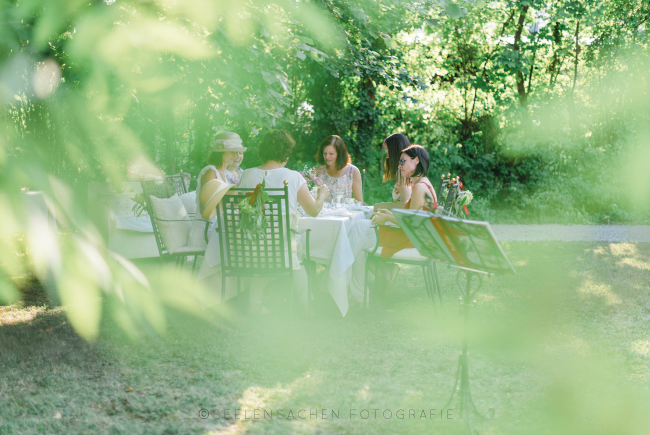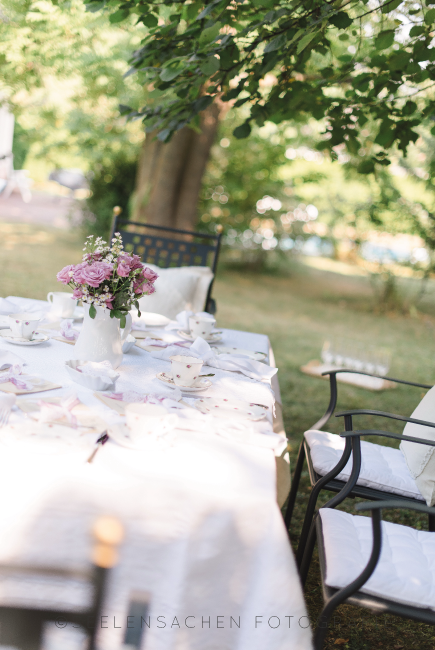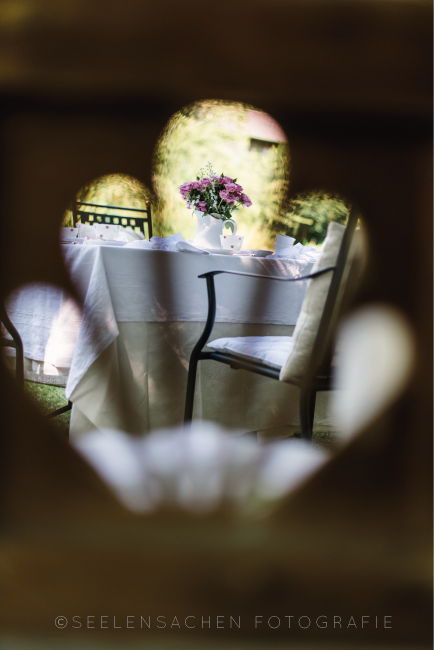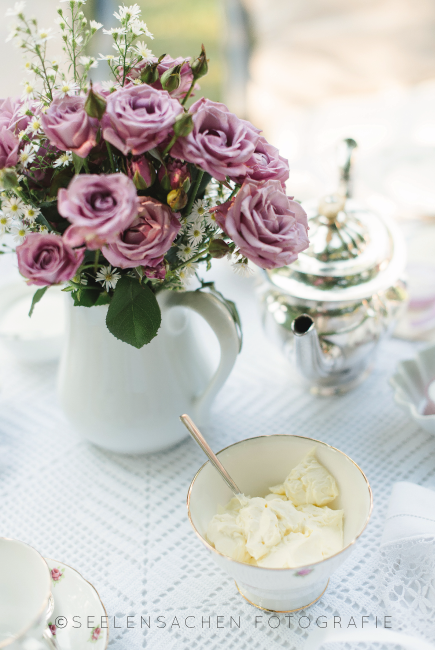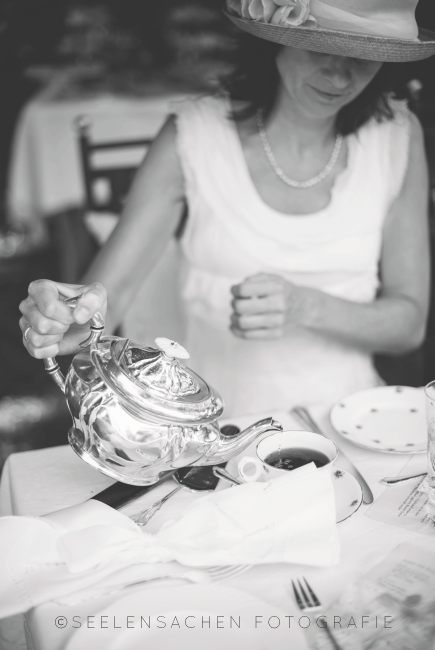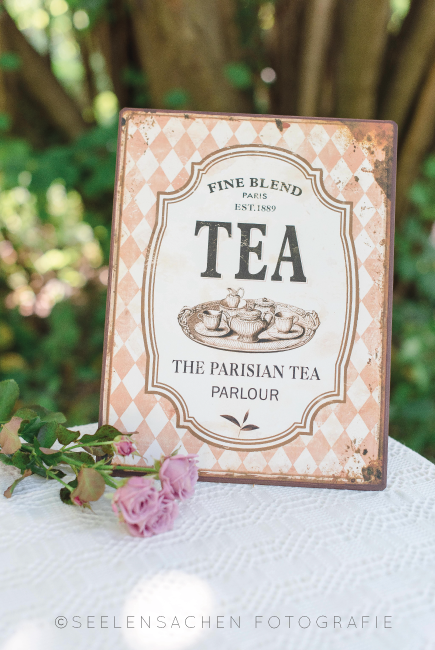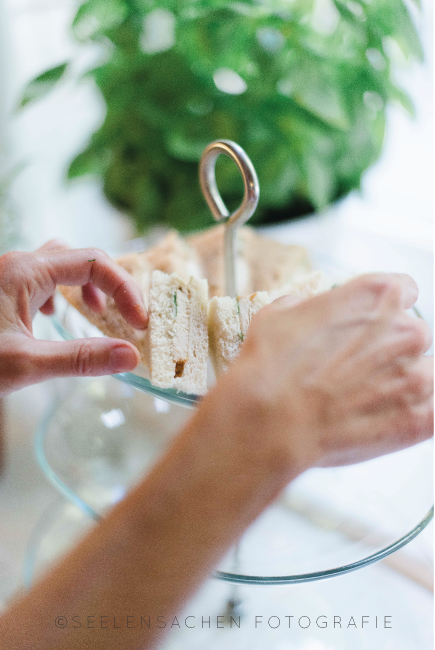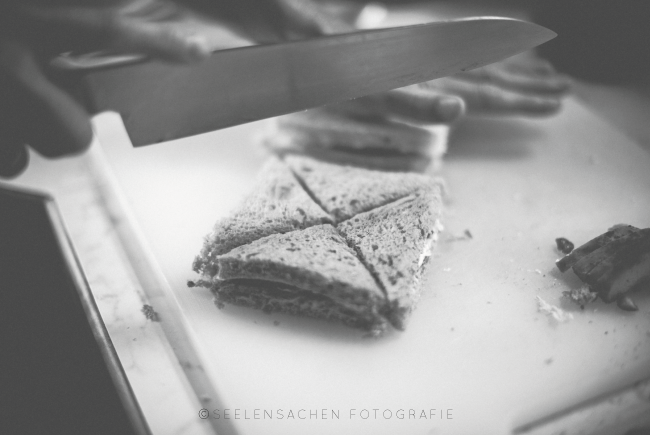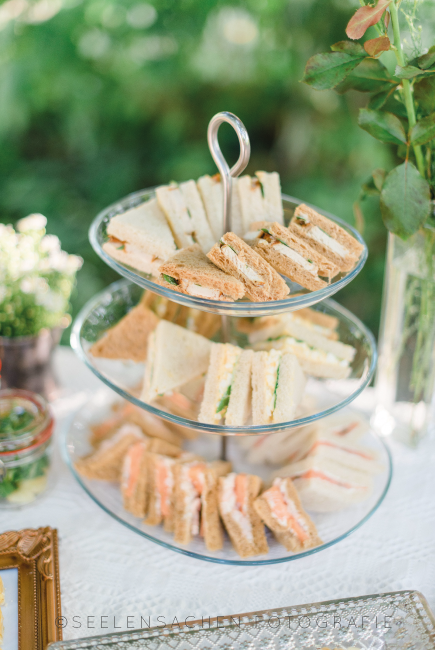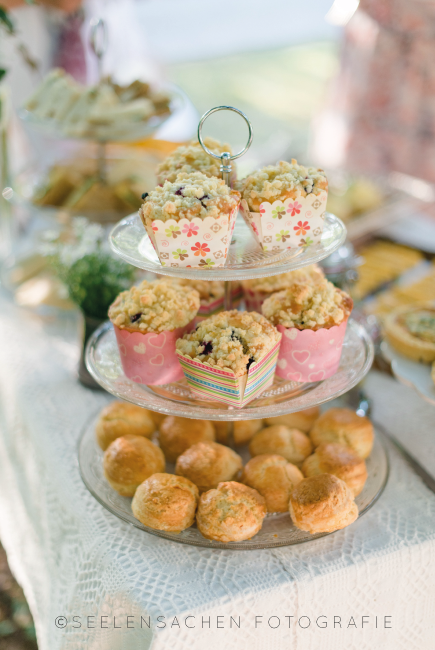
“There are few hours in life more agreeable than the hour dedicated to the ceremony known as afternoon tea.”
Henry James, The Portrait of a Lady (1881)
Afternoon Tea – How it all started
“Once upon a time …“, that’s the way fairy tales begin.
Once upon a time there was Anna, seventh Duchess of Bedford. However, this is not a fairy tale. She lived in England from 1788 to 1861. She was lady-in-waiting for Queen Victoria and it was her who started the ritual of afternoon tea.
As we all know, rich, aristocratic ladies did not have a lot of duties in those days. Their day started with a hearty breakfast, followed by a light lunch and then there was a long time to cover without food until dinner would be taken at about 8 p.m. Those afternoons could be very lengthy indeed and one can imagine that a light feeling of hunger would set in. At least, that’s what Anna, Duchess of Bedford, experienced when she complained of ‘a sinking feeling’ in the afternoon. So what did she do? She ordered some tea and a light snack to be eaten in her private rooms in order to bridge the long gap between lunch and dinner. As she liked this ritual very much it soon became a kind of tradition and she also started to send invitation cards to other ladies so they could join her for a pleasant afternoon with tea and cakes. This kind of little get-together was quickly adopted by many other people and soon enjoyed great popularity. A real ritual or ceremony developed around it and it required the use of expensive china and silverware as well as certain necessary accessories and, of course, proper and luxurious garments.
That’s how a little afternoon snack became a luxurious afternoon event.
This tradition was almost forgotten in the second half of the 20th century before it experienced a real revival in the 1990ies. Today many hotels, tea rooms, cafés and even department stores offer stylish afternoon teas and this tradition has finally also reached mainland Europe.
There is no afternoon tea without tea, of course. Scones and sandwiches are other integral parts and very often you are also served other sweet treats like cakes or cupcakes and additional savory snacks. Today you get a wide range of different scones, but in this blog post I will give you a basic scones recipe. Scones are best when they are still warm. They are usually eaten with clotted cream and strawberry jam. First you slice through a scone horizontally, then you spread clotted cream and strawberry jam on each half. Clotted cream is a very thick cream that can be spread with a knife. One afternoon tea etiquette says that the cream and the jam must first be transferred onto one’s plate before being spread on the scone. It is regarded as bad manners when transferred directly from the dish onto the scone. Nevertheless, there are two different ways of eating scones. Some people spread clotted cream first and then add a dollop of jam, other people do it the other way round.
Clotted cream is sometimes not easy to get in Continental Europe, but it can be replaced by butter or mascarpone, which is not the same, of course, but an acceptable substitute.
Another important feature in the ritual of afternoon tea is how to make the right brew. In the 18th and early 19th century tea was a rather expensive luxury good and therefore it was locked away in certain boxes called tea caddies. The lady of the house was the one who had full responsibility for the brewing of tea and the key to the lock of the tea caddy was securely fastened on a little chain around her neck.
Well now, in order to make the perfect tea you have to warm the teapot first. This is best done by pouring some boiling water into the teapot and allowing the pot to get warm. Then the pot is emptied again and tea bags or loose leaves are put into the pot. A certain rule says that if you use loose leaves you should take about one teaspoon per person and one ‘for the pot’. If you use teabags you should take one bag for two cups. Leave the tea bags in the hot water for 1-2 minutes. If you use loose leaves and want to avoid the tea getting bitter you can decant it into another tea pot, straining it.
Well, today I’ve provided you with some basic information on the ritual of afternoon tea. There is still so much more to tell and therefore I will give you some follow-ups in the next blog posts! So come back for more information and more recipes! And most importantly, there will be a give-away in one of the next afternoon tea blog posts! 🙂
Now I will show you how to make scones and two kinds of sandwiches.
But before I leave you to study my recipes I want to thank Nora from Seelensachen Fotografie for the wonderful photos she took at my afternoon tea invitation. With her amazing photos she succeeded in capturing the atmosphere of the afternoon and in drawing attention to all the little details of the decoration, the food and my guests. Thank you, Nora, that you took your time to create these wonderful pictures.
Scones with Buttermilk
About 10-12 scones
2 cups (225 g) flour (all-purpose)
2 hooped teaspoons of baking powder
2 tablespoons sugar
1 pinch of salt
1/3 cup (70-80 g) cold butter
1 egg
1 egg yolk
1/3 cup (85 ml) buttermilk
1 egg yolk and some milk for the egg wash
Preheat the oven to 200°C (180° fan, 400°F, gas mark 6). Prepare a baking sheet by either buttering it or covering it with baking parchment.
Combine the flour, baking powder, salt and sugar in a bowl. Cut the cold butter in 1 inch cubes and add it to the flour. Rub the butter into the flour, use your fingers, until you get tiny crumbs. Mix the egg, egg yolk and the buttermilk in a separate bowl until well combined then add to the flour mixture. Use a fork to gently fold the liquids into the flour until everything starts to bind and you get a soft dough. Turn onto a floured surface and knead the dough very lightly and very shortly. No long kneading is required as it will only harden your scones!
Roll the dough out (1 inch / 2,5 cm thickness). Cut out round scones, using a cookie cutter or a glass (abut 2 inches / 5 cm diameter). Place the scones on the baking tray.
Whisk the remaining egg yolk and some milk and brush the scones with this mixture.
Bake in the oven for about 15 minutes until they are golden brown.
They taste best when they are still warm. Serve with some clotted cream and strawberry jam.
Sandwiches with Chicken and Tarragon
Makes 4 large (16 small) sandwiches:
8 slices of white or brown bread
½ cup (100 g) cream cheese
2 chicken breasts
1 tablespoon chopped tarragon
a dash of Worcestershire-Sauce
salt, pepper, paprika
some olive oil
Season the chicken breasts with salt, pepper and paprika. Heat the olive oil in a pan and brown the chicken breast on all sides. Reduce the heat and roast them gently until they are done. Transfer onto a plate and allow to cool. Cut into ¼ inch slices.
Combine the cream cheese with the tarragon, Worcestershire Sauce, salt and pepper. Spread on the slices of bread. Put the chicken on 4 slices of bread and put the other four slices on top. Press down lightly and cut each sandwich in 4 triangles (cut diagonally).
Smoked Salmon Sandwiches
Makes 4 large (16 small) sandwiches:
8 slices of white or brown bread
½ cup (100 g) cream cheese
1/3 lb (125 g) smoked salmon (thinly sliced)
1 tablespoon chopped dill
some lemon juice
salt, pepper
Combine the cream cheese with the lemon juice, dill, salt and pepper. Spread on the slices of bread. Put the salmon on 4 slices of bread and put the other four slices on top. Press down lightly and cut each sandwich in 4 triangles (cut diagonally).
Here you can print the recipes:
- [b]About 10-12 scones[/b]
- 2 cups (225 g) flour (all-purpose)
- 2 hooped teaspoons of baking powder
- 2 tablespoons sugar
- 1 pinch of salt
- 1/3 cup (70-80 g) cold butter
- 1 egg
- 1 egg yolk
- 1/3 cup (85 ml) buttermilk
- 1 egg yolk and some milk for the egg wash
- Preheat the oven to 200°C (180° fan, 400°F, gas mark 6). Prepare a baking sheet by either buttering it or covering it with baking parchment.
- Combine the flour, baking powder, salt and sugar in a bowl. Cut the cold butter in 1 inch cubes and add it to the flour. Rub the butter into the flour, use your fingers, until you get tiny crumbs. Mix the egg, egg yolk and the buttermilk in a separate bowl until well combined then add to the flour mixture. Use a fork to gently fold the liquids into the flour until everything starts to bind and you get a soft dough. Turn onto a floured surface and knead the dough very lightly and very shortly. No long kneading is required as it will only harden your scones!
- Roll the dough out (1 inch / 2,5 cm thickness). Cut out round scones, using a cookie cutter or a glass (abut 2 inches / 5 cm diameter). Place the scones on the baking tray.
- Whisk the remaining egg yolk and some milk and brush the scones with this mixture.
- Bake in the oven for about 15 minutes until they are golden brown.
- [b]Makes 4 large (16 small) sandwiches:[/b]
- 8 slices of white or brown bread
- ½ cup (100 g) cream cheese
- 2 chicken breasts
- 1 tablespoon chopped tarragon
- a dash of Worcestershire-Sauce
- salt, pepper, paprika
- some olive oil
- Season the chicken breasts with salt, pepper and paprika. Heat the olive oil in a pan and brown the chicken breast on all sides. Reduce the heat and roast them gently until they are done. Transfer onto a plate and allow to cool. Cut into ¼ inch slices.
- Combine the cream cheese with the tarragon, Worcestershire Sauce, salt and pepper. Spread on the slices of bread. Put the chicken on 4 slices of bread and put the other four slices on top. Press down lightly and cut each sandwich in 4 triangles (cut diagonally).
- [b]Makes 4 large (16 small) sandwiches:[/b]
- 8 slices of white or brown bread
- ½ cup (100 g) cream cheese
- 1/3 lb (125 g) smoked salmon (thinly sliced)
- 1 tablespoon chopped dill
- some lemon juice
- salt, pepper
- Combine the cream cheese with the lemon juice, dill, salt and pepper. Spread on the slices of bread. Put the salmon on 4 slices of bread and put the other four slices on top. Press down lightly and cut each sandwich in 4 triangles (cut diagonally).
